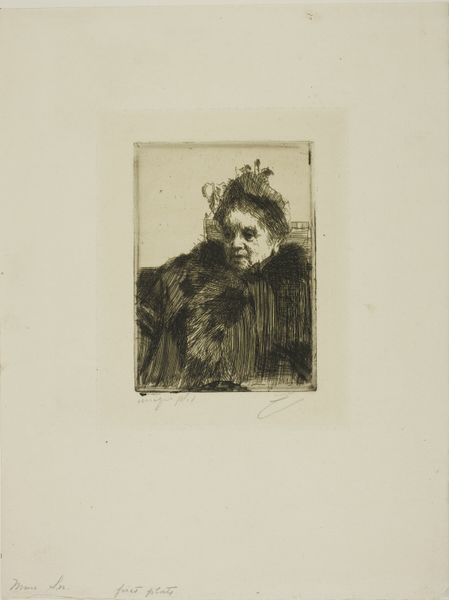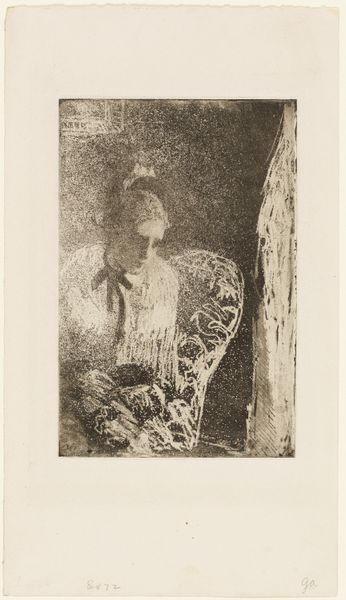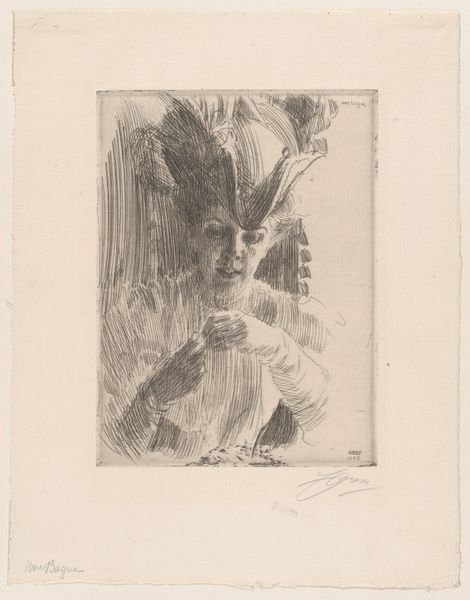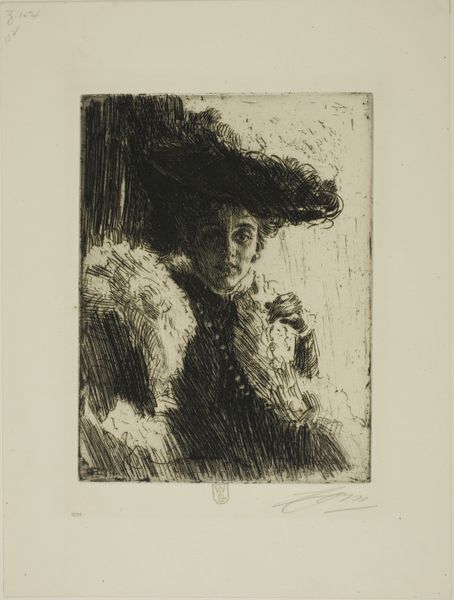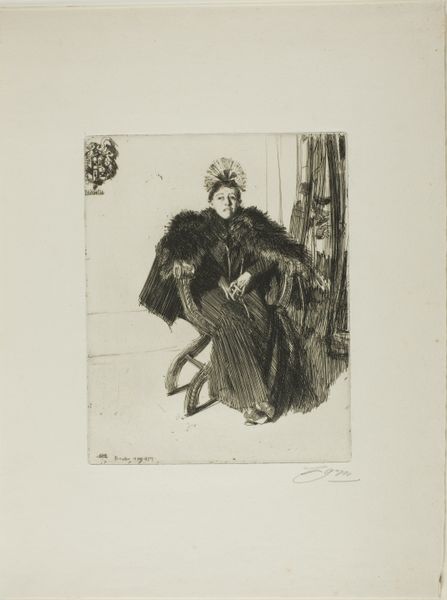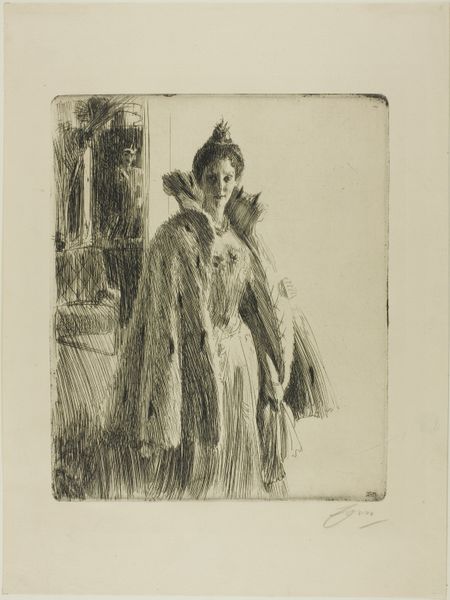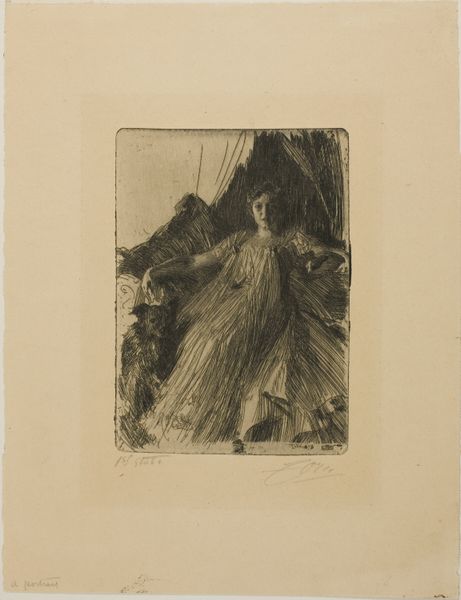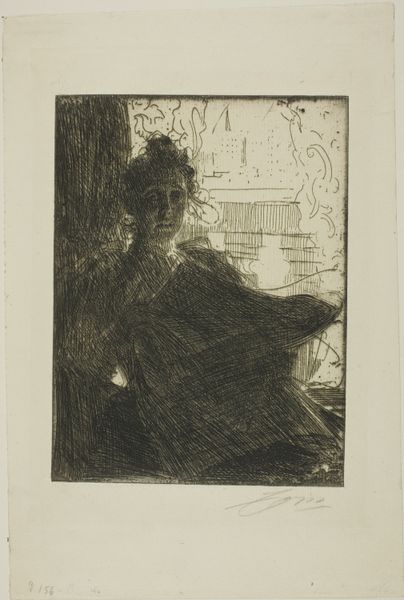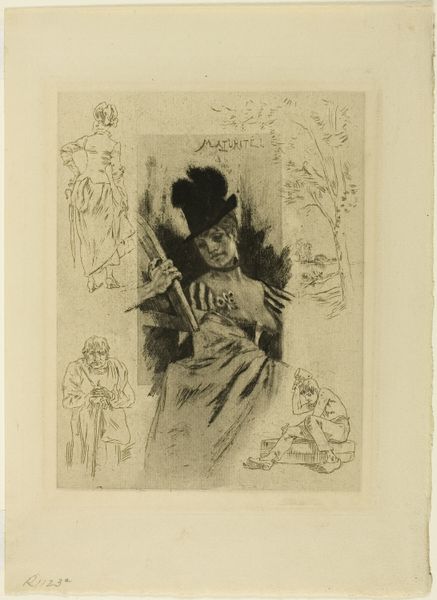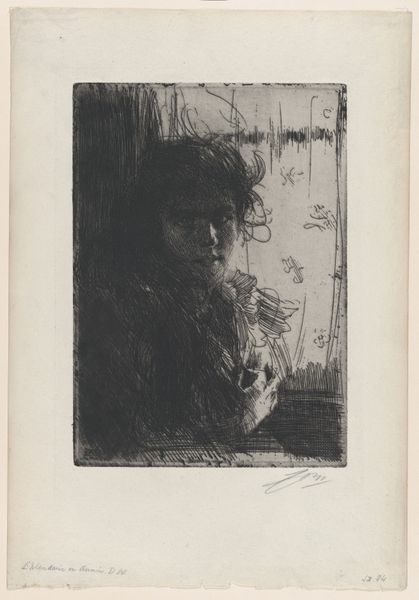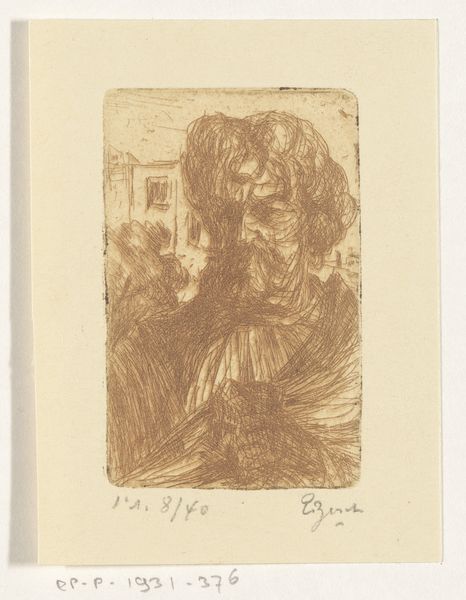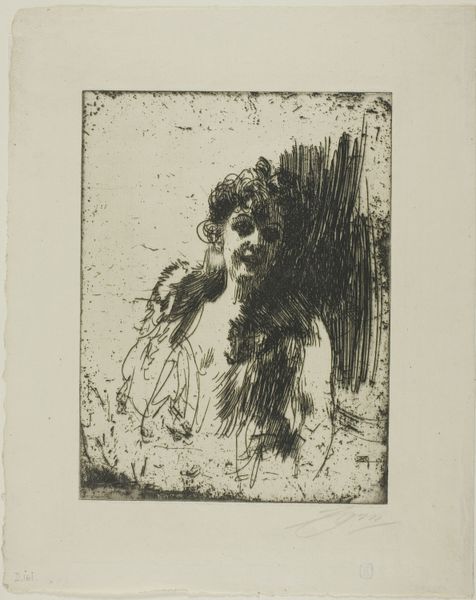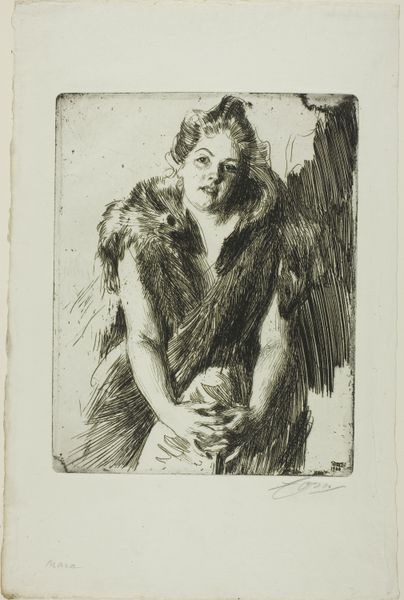
Dimensions: 240 × 161 mm (image/plate); 371 × 281 mm (sheet)
Copyright: Public Domain
Editor: This is Anders Zorn's "Gerda Hagborg III" from 1896, an etching on paper currently held at the Art Institute of Chicago. The woman's fur collar looks incredibly textured. How did Zorn achieve such detail with etching, and what does it tell us? Curator: Zorn's skill in etching reveals much about the democratization of art and the art market at the turn of the century. The lines that define her face, the quick, nervous strokes making up the fur… They weren't just aesthetic choices, but direct results of his method. Consider the physicality, the acid biting into the metal plate. Editor: So, you are saying his technique reflected the industrial processes of the time? Curator: Exactly! Printmaking allowed Zorn to reproduce and sell his art to a wider audience, blurring the lines between "original" art and commodity. Her fashionable attire and opulent fur suggest a world of conspicuous consumption, carefully constructed through both her appearance and the artwork intended to reproduce it. The labour invested is therefore deeply intertwined with commerce, would you not agree? Editor: That's fascinating; I never considered the print's replicability in the context of 19th-century consumer culture. So the very nature of the medium contributes to the understanding of both the subject and the market for art. Curator: Precisely! It's a dance between artistic expression, the means of production, and societal values reflected through a seemingly straightforward portrait. Editor: I appreciate that connection; it completely shifted how I view this artwork. Thank you for the enlightening perspective. Curator: It's crucial to examine both form and historical-economical contexts to grasp the artist’s aims fully. My pleasure!
Comments
No comments
Be the first to comment and join the conversation on the ultimate creative platform.
